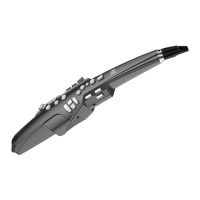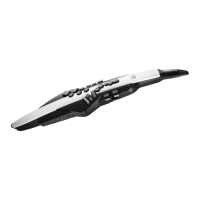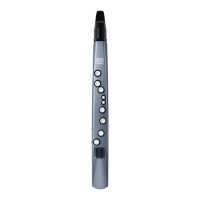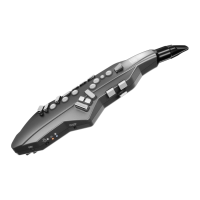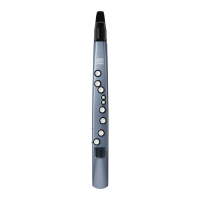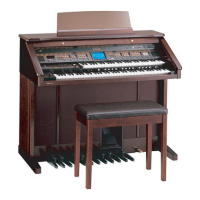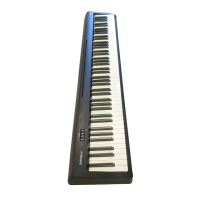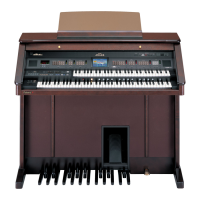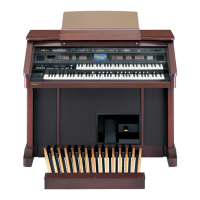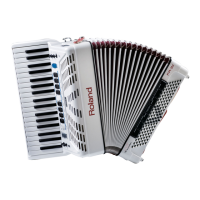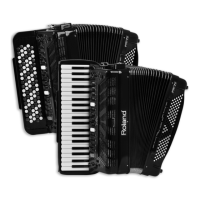7
Menu Settings
Menu List
2
: Tone Setting S: System Setting
Menu Value Default Explanation
Volume
0–10 10
Adjusting the Volume
You generally adjust the volume by the strength of your breath when performing, but you can also set the volume in the
menu. This changes the volume of the speaker and the PHONES/OUTPUT jack.
S
M.Tuning
415.3–466.2 (Hz) 440.0
Changing the Master Tuning
Changes the tuning of the Aerophone.
The displayed value is the frequency of the A key. With the factory settings, the Aerophone’s tuning is set to A=440.0 Hz, but
you can change this to some other tuning such as 442.0 Hz.
S
Breath
L2, L1, M, H1, H2 M
Adjusting the Breath Sensitivity
Species how the sound responds to the force of your breath.
L2, L1 Fortissimo () can be produced even by blowing relatively softly.
M This setting is the closest to the response of an actual wind instrument.
H1, H2 Fortissimo () is produced only when you blow quite strongly.
Breath force
Level
M
H1
H2
L1
L2
S
Transpos
-5–+6
Depends
on the
tone
Changing the Key (Transpose)
Transposes the pitch range of the tone in semitone steps.
-5 -4 -3 -2 -1 0 +1 +2 +3 +4 +5 +6
If this is set to “0,” the “C” ngering in the “Fingering Chart” at the end of this manual produces the pitch C.
The alto saxophone whose base key is “E
” is set to a transpose setting of “+3,” and the soprano saxophone whose base key is
“B
” is set to “-2.”
2
Octave
-3–+3
Depends
on the
tone
Octave Shift Setting
Shifts the pitch range of the tone in one-octave steps.
The octave shift value is set appropriately for each tone so that it will have the appropriate pitch range. For example, this is set
to “0” for the soprano saxophone, “-1” for the alto saxophone, and “-2” for the baritone saxophone.
2
Reverb
0–10
Depends
on the
tone
Reverb Setting
Adjusts the depth of reverb (the reverberation that is characteristic of a performance in a concert hall).
2
Chorus
0–10
Depends
on the
tone
Chorus Setting
Adjusts the depth of the chorus eect.
Chorus is an eect that creates a beautiful spaciousness and depth by adding a slightly modulated sound.
2
MFX1
MFX2
0–10
Depends
on the
tone
Multi-Eect Setting
Species the depth of the eect that’s assigned to each tone.
* The eect type is set for each tone; it cannot be selected on the Aerophone.
2
BiteCtrl
PIT, VIB
Depends
on the
tone
Bite Sensor Control Setting
For each tone, this species the parameter that’s controlled by the bite sensor (the strength with which you bite the
mouthpiece).
PIT Pitch
VIB Vibrato depth
2
Bend Sw
OFF, ON
Depends
on the
tone
Thumb Controller Up/Down (Bend Up/Down) Setting
Species whether thumb controller up/down (bend up/down) is enabled or disabled.
2
Bend Rng
1–12
Depends
on the
tone
Bend Range Setting
Species the thumb controller up/down (bend up/down) bend range in semitone units.
2
Left Asn
RightAsn
OFF, CC.1–31,
CC.33–95, H.-8,
H3, H5, H8
Depends
on the
tone
Thumb Controller Left/Right Assignment Setting
For each tone, this assigns the parameter that is controlled by the thumb controller (left/right).
Value Explanation
OFF O
CC.1–31, CC.33–95 Control Change
H.-8 Harmony -1 Oct
H.3 Harmony 3rd
H.5 Harmony 5th
H.8 Harmony +1 Oct
2
Left Min
Left Max
RightMin
RightMax
0–127
Depends
on the
tone
Thumb Controller Left/Right Range (Minimum/Maximum Value) Settings
Specify the range (minimum/maximum value) of the values controlled by the thumb controller (left/right).
2
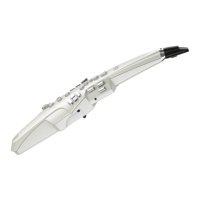
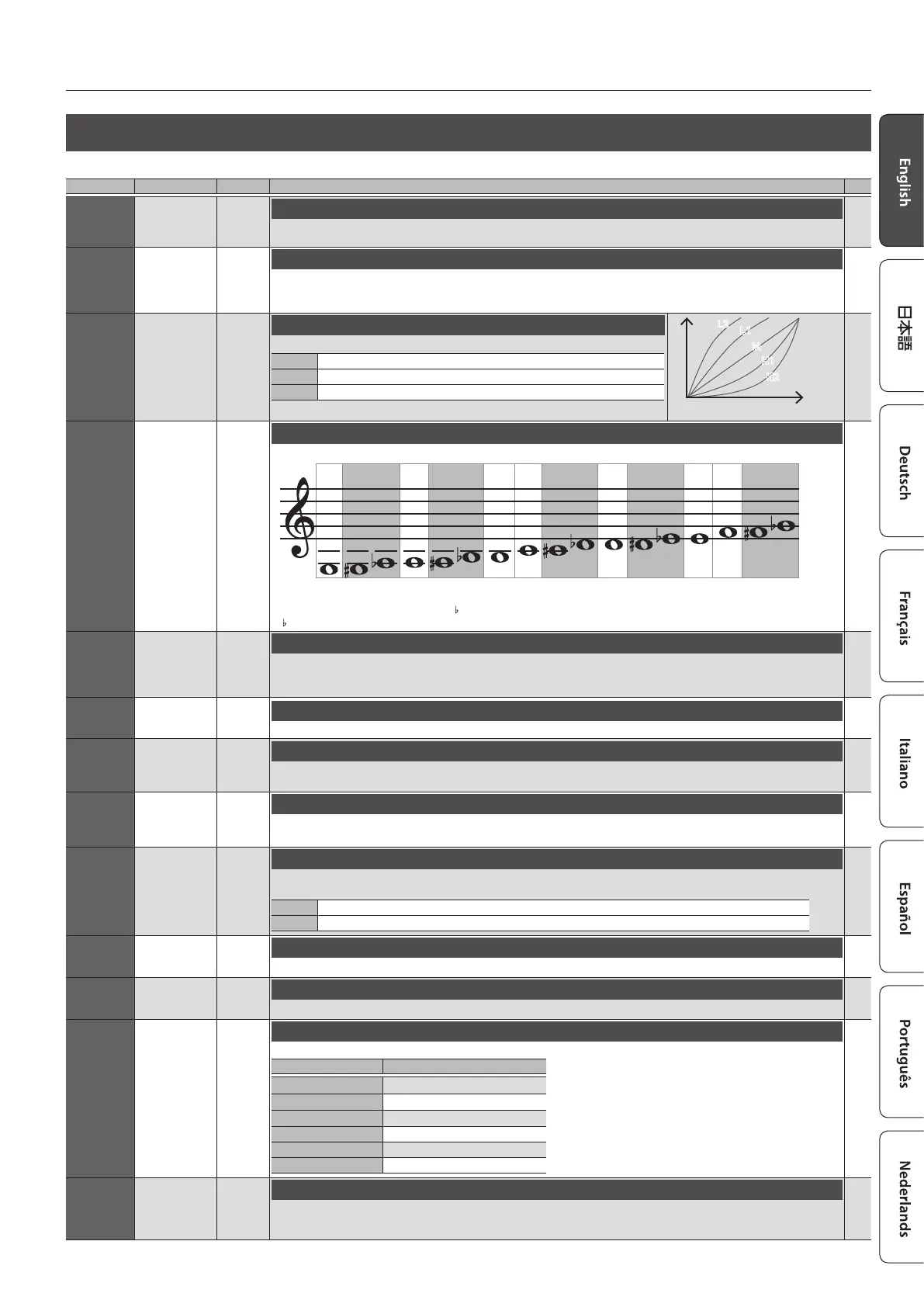